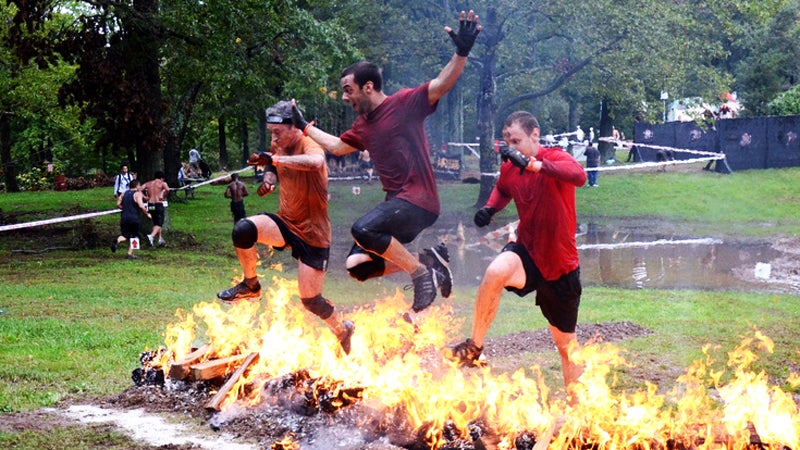In just four years, obstacle racing has become the fastest-growing sport in the United States. In 2013, an estimated 3 million people crossed an OCR finish line—that’s more than all half-marathon and marathon finishers combined.
Having witnessed sports explosions in the past, we had to ask: is this the bang to a future bust? In the mid ‘90s to early 2000s, adventure racing was the sport du jour, hitting the big time with extensive coverage on MTV, ESPN, and The Discovery Channel—then it fizzled into a niche pastime. What’s going to keep OCR from suffering the same fate?
“We have a clear goal to integrate the sport to the Olympic level,” says adventure racing icon, Ian Adamson. He’s been tapped to lead the newly-created International Obstacle Racing Federation, an organization that hopes to be what the Union Cycliste Internationale is to cycling, or the International Triathlon Union is to triathlon. Getting obstacle racing into the Olympics, Adamson says, is the main way the IORF hopes keep OCR from becoming the next adventure racing.
“Adventure racing didn’t have a governing body,” Adamson says. “The sport was fragmented to the point that it was difficult to coordinate. Many of the organizers set up competing organizations and wanted to own the sport rather than collaborate and grow it.”
By maintaining ties with the International Olympic Committee and the World Anti-Doping Agency, the IORF hopes to get OCR into the Olympics within the next two to three summer games. “Obstacle racing requires basic functional fitness close to the Olympic credos of faster, higher, stronger,” Adamson says. “I think we’ll be able to shape and position obstacle racing for inclusion in the Olympics.”
It’s a lofty goal, to be sure, but not totally unreasonable. To even be considered for the Olympic stage, a sport must have an international governing body with WADA-approved anti-doping policies. The formation of the IORF is therefore an essential first step. After that, the rules for inclusion are more subjective.
“You have to look in considerable detail at, not just the sport itself, what it might offer to the Olympic Games, what it brings to the Olympic program,” Mike Lee told CNN. Lee is the former director of communications and public affairs for London 2012’s successful bid. “What do you offer to the Olympic experience? What is it your sport will do to enhance the Games, in a way which is also in line with the spirit and the values of the Games?” The IOC’s official evaluation document shows that a sport’s history and tradition, universality, popularity, image, and costs are also considered.
So is pegging 2020 or 2024 as the year OCR will make its Olympic debut totally insane? Maybe not. As the Los Angeles Times explained earlier this year, slopestyle was “fast-tracked into the Olympics only three years ago, an unusual departure for the conservative International Olympic Committee…Many observers saw the decision as a reflection of the Olympics’ desire to reinvent itself and attract a younger audience.” OCR could easily market itself as a sport with booming popularity, a youthful audience, and low production costs.
Of course, slopestyle falls under the governance of the International Ski Federation, an organization that’s been overseeing Olympic events since 1924.
“Nobody knows about [the IORF] yet,” Adamson says. The new federation has a long way to go to earning the respect of not just the IOC, but also newly formed national OCR governing bodies.
The announcement of the IORF’s formation comes just four months after two Georgia-based entrepreneurs introduced United States Obstacle Course Racing (USOCR), a national organization that has largely modeled itself after USA Triathlon, offering insurance deals to affiliated events, and a national ranking system. But so far, USOCR seems to be embracing its big brother.
“I’m proud that the IORF is taking a proactive stance on growing the sport’s visibility,” says USOCR co-founder, Sam Mansfield, who sees the IORF like the ITU to his USAT.
Whether or not the new federation reaches its ultimate goal of getting OCR into the Olympics, its presence signals a concerted effort to preserve the sport’s longevity—an effort adventure racing never had. That, Adamson says, is another reason OCR is here to stay.


